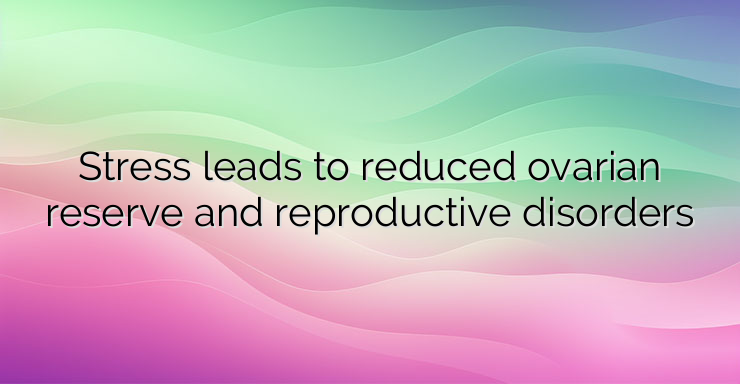Stress is an environmental factor that has multiple consequences not only on mental health, but also on reproductive health and overall quality of life. Lab models exposed to stress may have reduced ovarian reserve and reduced fertility, according to a study published in the Endocrine Society’s journal Endocrinology. Ovarian reserve is the reproductive potential left in a woman’s two ovaries based on the number and quality of eggs. A woman is born with a finite number of eggs and her body cannot produce any more. Reduced ovarian reserve represents the loss of normal reproductive potential in the ovaries due to a lower number or reduced quality of remaining eggs. The scientists investigated the effect of stress on ovarian reserve using a loud-sounding method in laboratory models. Female laboratory models exposed to these loud, stressful sounds have been found to have reduced ovarian reserve and fertility. The study exposed female laboratory models to loud, stress-inducing noise for three weeks and analyzed the effects on sex hormone levels, egg count and quality, and ability to conceive and effective fertilization . Scientists have found that loud noises reduce estrogen and anti-Müllerian hormone levels in laboratory models. Estrogen is part of a group of hormones that play an important role in growth and reproductive development, and anti-Müllerian hormone is a hormone produced by the ovaries that helps form the organs of the reproductive system. Loud sound signals also reduce the number and quality of eggs, and this leads to lower fertility and impaired implantation of the fertilized egg in the lining of the uterus. Based on these findings, it is now hypothesized that stress may be associated with reduced ovarian reserve, the researchers explain. Determining the relationship between chronic stress and ovarian reserve status is important because it may broaden appreciation of the limitations of current clinical interventions and provide valuable insight into the impact of everyday life factors on diminished ovarian reserve. References: https://doi.org/10.1210/endocr/bqac042


Leave a Reply